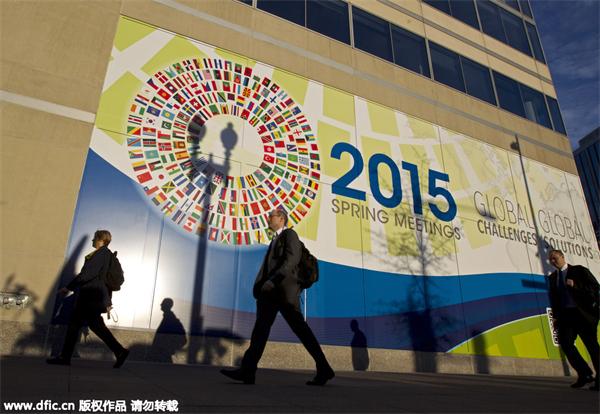 |
|
People walk past the International Monetary Fund (IMF) headquarters in Washington, Thursday, April 16, 2015, as the IMF/World Bank spring meetings begin. [Photo/IC] |
Later this year, the International Monetary Fund will decide whether to include the renminbi in its Special Drawing Rights - a "virtual currency" made up of a basket of other currencies.
If this happens, RMB use around the world is set to soar. Automatically, all central banks would become holders of RMB exposure through their SDR assets, and official reserve currency status would spur those central banks that have not already done so to invest part of their reserves in RMB.
There would be significant RMB hedging activity by some international institutions such as the African Development Bank and Bank of International Settlements, whose balance sheets of over $300 billion combined are denominated in SDR.
With the IMF's official stamp of approval, there would be a big boost to demand from investors and private companies. One example could be the Basel III Liquidity Coverage Ratio regulation, which requires the High Quality Liquid Assets held by banks to be in convertible currencies. Whether or not the RMB qualifies is up to regulators, but the IMF's decision could play a part in whether it does qualify or not.
The final decision on the currency's inclusion in the SDR will, to a large extent, be political, and, judging by recent noises, it now seems significantly more likely that it will go in the RMB's favour.
In Europe - whose member governments have the largest combined share of the vote at the IMF - the atmosphere is turning increasingly favourable, with Germany declaring officially last month that it supports the RMB's inclusion in the SDR.
Along with France, Italy, Switzerland and the United Kingdom, Germany has also recently joined the China-proposed Asian Infrastructure Investment Bank as a founding member, in a show of political support for the Chinese authorities.
By our estimates, more than $100 billion of central bank reserves are now invested in RMB, considerably more than in the Swiss Franc, roughly on par with the known amounts of Australian and Canadian dollar investments, and fast catching up with the yen and the pound.

I’ve lived in China for quite a considerable time including my graduate school years, travelled and worked in a few cities and still choose my destination taking into consideration the density of smog or PM2.5 particulate matter in the region.